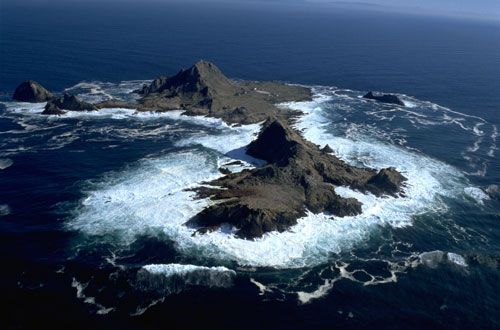Summer has yet to begin, and yet our hopes and prayers for a safe 2012 sailing season in North America have been shattered. Five sailors were washed overboard and died in Saturdays Farallones Race, sponsored by the San Francisco Yacht Club. This was an experienced crew, which included several sailors with close ties to the San Francisco Yacht Club-the home club to many longtime Practical SailorAccording to news accounts, the Sydney 38 Low Speed Chase was struck by a breaking wave while rounding South Farallon Island, one of a group of islands outside San Francisco Bay that serves as a rounding mark in the 48-mile race. Initial reports indicated that five crew were washed overboard by a first wave, and before the remaining crew could rescue them, a second wave washed two more into the water and hurled the boat onto the rocky shore of the island with the one crewmember still aboard. Winds were estimated at 17 to 25 knots, and seas were running greater than 10 feet. The rough conditions, exacerbated by the ebbing tide, had forced many boats to retire early in the race.
Among the crew still missing and presumed dead are Alexis Busch, 26, of Larkspur, Calif.; Jordan Fromm, 25, of Kentfield, Calif.; Alan Cahill, in his 30s, of Tiburon, Calif.; and Elmer Morrissey, of Ireland, also in his 30s. The body of Marc Kasanin, 46, of Belvedere, Calif., was recovered. The U.S. Coast Guard called off the search for survivors on Sunday after more than 30 hours.
The decision to suspend a search and rescue in a case like this is never an easy one to make, said Capt. Cynthia Stowe, San Francisco Sector commanding officer. The Coast Guard extends our deepest sympathies to the families and friends of the lost crewmen and the deceased. They will all be in our thoughts and prayers.
The race tragedy follows last summers fatal accident in the 2011 Chicago-Mackinac Race, in which two sailors died, and the near-fatal accident in the 2011 Rolex Fastnet race, which Practical Sailor is reporting on in our May issue. In the Fastnet article, the third in our series on 2011 sailing accidents, we offer guidance for future post-accident inquiries. Hopefully, the individuals involved in theFarallonespost-accident report will consider our comments on this topic.
It is still too early to say what may have led to the accident, but the sea conditions around the Farallones are notoriously dangerous and wave heights are often unpredictable. In April 1982, seven boats were abandoned and six people died (two who were cruisers on their way to Southern California, not racers) when a storm pounded the Double-handed Farallones Race, which takes the same route as Saturday’s contest. More recently, in 2009, the Coast Guard was called in to rescue two sailors from the 27-foot sailboat Heat Wave when its keel snapped off and the boat capsized during the double-handed race.
PS contributor Skip Allan, who has raced in both the single-handed and double-handed Farallones races, offered his take on Saturday’s accident:
Usual spring conditions are rough to rugged, with prevailing northwest winds 20 to 30 knots. Ten- to 15-foot seas are not uncommon in the vicinity.
Close reaching along the north shoreline of the Southeast Farallon can be a humbling experience, with breaking swells and a jagged shoreline just to leeward. It is tempting to cut the corner along this section, and many racers do so. However, such a course just outside the visible breakers crosses the five-fathom line at the northwest point.
The Farallones are 27-miles northwest of the world-famous Mavericks surf spot, home of 25- to 50-foot waves. These ocean swells from winter storms travel hundreds of miles from the Gulf of Alaska. On an irregular basis, the bigger swells or sets can and do break in 30 or more feet of water, as they were apparently doing last Saturday when Low Speed Chase was lost.
I was not there, so I’m not going to judge the actions of the skipper and crew except to say they were extremely unfortunate to be in the wrong place at the wrong time. There but for the grace of God go we.
Three days after the accident, the organizers of the Pacific Cup, an annual race to Hawaii that will set out from San Francisco on July 16, offered their condolences and called the tragedy a wake up call for safety at sea. The organizers reminded Pac Cup participants that they are bound by the Annotated International Sailing Federation Offshore Special Regulations that govern offshore sailing. The rules include specific recommendations regarding jacklines, lifelines, personal flotation devices, and tethers.
Bryan Chong one of the surviving crew members from Low Speed Chase had published a detailed account of the accident on Scuttlebutt. A YouTube video taken during the race that day gives an indication of the conditions.

































